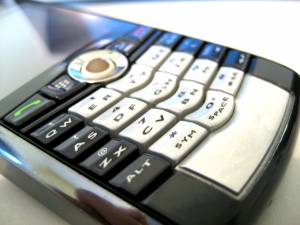Smart Phone Touch Screens Go Tactile
 Touch screens have revolutionized the way we interact with mobile phones, tablets and other devices. Now you can easily point at something on the screen, tap to open applications or slide your fingers around to scroll down the screen. Despite the advantages of touch screens, they offer some distinct disadvantages.
Touch screens have revolutionized the way we interact with mobile phones, tablets and other devices. Now you can easily point at something on the screen, tap to open applications or slide your fingers around to scroll down the screen. Despite the advantages of touch screens, they offer some distinct disadvantages.
If you have a smart phone with a touch screen, you might miss not having a proper keyboard. If you have ever tried texting or emailing with a smart phone, you probably understand. Typing with a touch screen can be frustrating, since you can accidentally press an nearby key, especially if you have large fingers.
Some phone users, especially ones who are used to a Blackberry-type keyboard, prefer the tactile feel of buttons, and the improved accuracy. And some segments of the population, such as older adults, the visually impaired, and people with arthritis or Parkinson's disease, have difficulty using touch screens.
Soon smart phones and tablets might have buttons that can pop up. Tactus Technology, a company based in Fremont, California, is pioneering a new kind of tactile user interface for touch screens.
This “tactile layer” will have transparent, physical buttons that can pop up when needed and disappear when not. The tactile layer does not add thickness to the device since it is meant to replace the existing display screen. Integration of the touch screen and keyboard opens up interesting possibilities for the future design and ergonomics of smart phones and tablets.
"Imagine if buttons grew out of your smartphone, tablet, or dashboard to improve the user experience. You could rest your fingers on them, type or play games, and then have the buttons disappear when you are done," explained Craig Ciesla, CEO of Tactus.
The technology relies on microfluidics, which is a special kind of oil that creates temporary keys by raising membranes. The dynamic buttons can be controlled by the applications itself.
When activated, the tactile layer deforms and shapes or buttons appear on-screen. Users can interact with these buttons much like a normal keyboard. Buttons can be configured to a specific size, height, and firmness.
With Tactus keyboards, you can change the resistance and pressure of the keys. Users can also customize the feel of their keyboard, something you can't do with traditional keyboards. When the buttons are not needed, they recede into the screen and become invisible.
"Current haptic technologies fall short in assisting users in properly locating their fingers on the screen or keyboard, because of the inherently flat nature of touch screens. Without proper orientation, mistakes will be high," said Nate Saal, VP of business development for Tactus Technology. "Given how fast touch screens are being integrated into hand-held devices ... it is vital to have a tactile solution that helps users interact with them much more naturally, comfortably and safely."
Touch screens offer users a versatile experience, but lack tactile sensations. Some solutions such as vibration haptics try to emulate the sense of touch through feedback technologies, by vibrating after touching the screen. These vibrate even when the display is touched by mistake or in the wrong area.
Tactus' tactile technology, however, has real buttons that can be pressed on like a traditional keyboard. Tactus also solves the “orientation” and “confirmation” issues of touch screens.
Not just useful for smart phones and tablets, tactile technology adapts for other devices like mobile computers, medical devices, point of sale systems, industrial controls, GPS (global positioning system) devices, automotive displays, ebook readers, remote controls, gaming devices and more.
Tactus Technology was recognized as a top 10 finalist for their innovative technology at the Consumer Electronics Association (CEA) Eureka Park Challenge at CE Week in New York City. Tactus was also invited by the Society for Information Display to the I-Zone at Display Week 2012 in Boston.
They showcased their prototype on a Google Android tablet developed in partnership with Touch Revolution, a Redmont, California-based company. Touch Revolution is a unit of TPK Holding Co., Ltd, which is the largest-volume manufacturer of glass-projected capacitive multi-touch screens in the world.
"There was a lot of excitement. People were commenting that this is what they wanted as part of their interface," Saal said. "There was a lot of interest from retailers, as well as device manufacturers in mobile, tablet, automotive, medical and more."
Tactus Technology raised $6 million in Series A funding last year. They will be making the tactile technology available to OEMs (original equipment manufacturer) by late 2013. For a complete touch display, OEMs can go through Touch Revolution. OEMs who want to add Tactile Layer to their own products can buy directly from Tactus.
"Tactus has a unique technology that will bring real touch to touch screens," said Jonathan Barker of Thomvest Ventures. "People experience the world through touch and given a choice, we are confident that people will prefer a truly tactile experience."
Watch a video of Tactus technology here.
See related articles:
DMV Kiosks Offer Convenience, Security for Nevada Motorists
Vehicle Mount Mobile Computers Benefit Warehouse Operations
Visual Pattern Recognition - An Automatic Identification Technology
{jcomments on}
